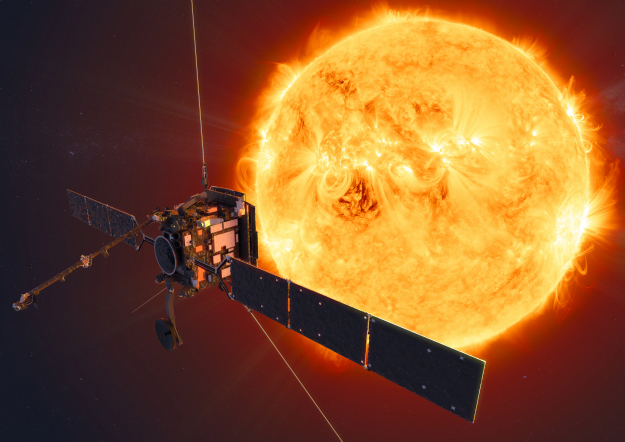
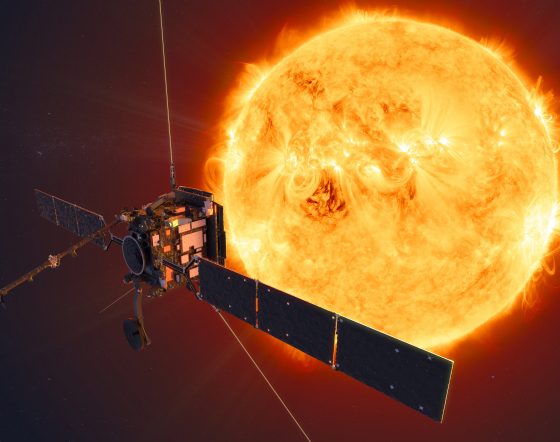
Space
New Sun mission to launch in attempt to snap 1st-ever photos of star’s poles
A new spacecraft is set to launch on a journey to the Sun. It’s goal: to snap the first pictures of the Sun’s north and south poles.
Dubbed Solar Orbiter, the spacecraft is a collaboration between the European Space Agency (ESA) and NASA. The 3,970-lb. (1,320 kg) spacecraft will launch atop United Launch Alliance (ULA) Atlas V rocket on Feb. 7, 2020, during a two-hour launch window that opens at 11:15 p.m. EST (0415 GMT Feb. 8).
It’s launching at night because the spacecraft is on a path to Venus where it will use the planet’s gravity to slingshot itself out of the ecliptic plane — the area of space where all planets orbit.
From that vantage point, Solar Orbiter’s on-board cameras will capture the first-ever view of the Sun’s poles.
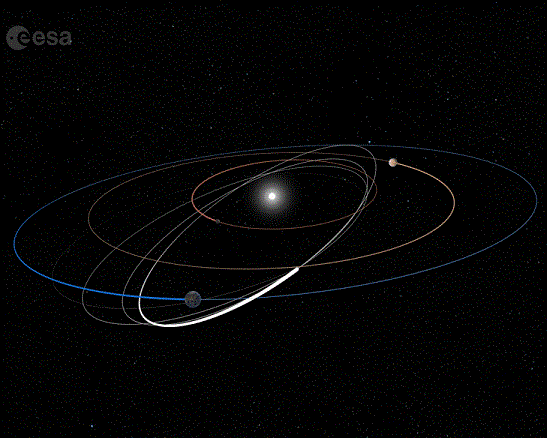
“Up until Solar Orbiter, all solar imaging instruments have been within the ecliptic plane or very close to it,” Russell Howard, space scientist at the Naval Research Lab in Washington, D.C. and principal investigator for one of Solar Orbiter’s ten instruments said in a mission update. “Now, we’ll be able to look down on the Sun from above.”
“It will be terra incognita,” added Daniel Müller, ESA project scientist for the mission at the European Space Research and Technology Centre in the Netherlands. “This is really exploratory science.”
The spacecraft is taking a suite of specialized instruments with it on its journey to the sun. It will also work in tandem with another solar-observing spacecraft—NASA’s Parker Solar Probe.
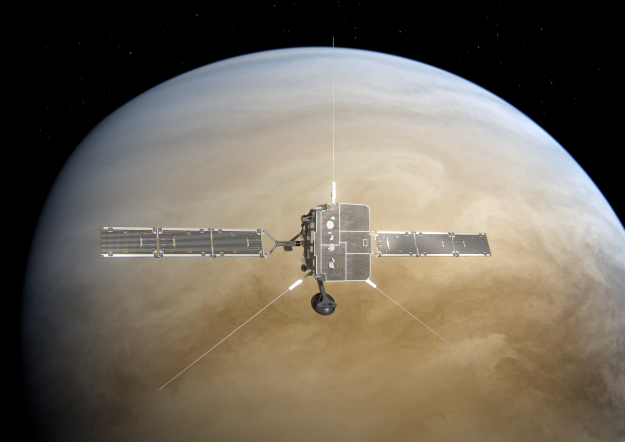
Launched in 2018, Parker has now completed its first few close passes of the sun. The spacecraft is already making discoveries, showing that despite appearance, the sun is anything but quiet.
It plays a central role in shaping space around us. As a magnetically active star, the sun unleashes powerful bursts of light and a slew of charged particles (racing at near light-speed) across the solar system. This violent activity has been happening throughout the sun’s 5.5 billion-year lifespan and affects our planet daily.
The sun has a massive magnetic field, which stretches far beyond Pluto, and creates the boundary between our solar system and interstellar space. It also creates a path for charged particles to whiz across the solar system.
The barrage of energetic particles, known as the solar wind, can damage spacecraft, satellites, and is harmful to our astronauts. It can disrupt navigation signals, and during extreme flares, can even trigger power outages.
But we can prepare for these things by monitoring the sun’s activity and magnetic field. However, our view from Earth is limited and leaves us with incomplete data. Scientists are hoping that by observing the sun’s polar regions, Solar Orbiter will be able to fill in the gaps in our knowledge.
“The poles are particularly important for us to be able to model more accurately,” Holly Gilbert, NASA project scientist for the mission at NASA’s Goddard Space Flight Center in Greenbelt, Maryland. “For forecasting space weather events, we need a pretty accurate model of the global magnetic field of the Sun.”
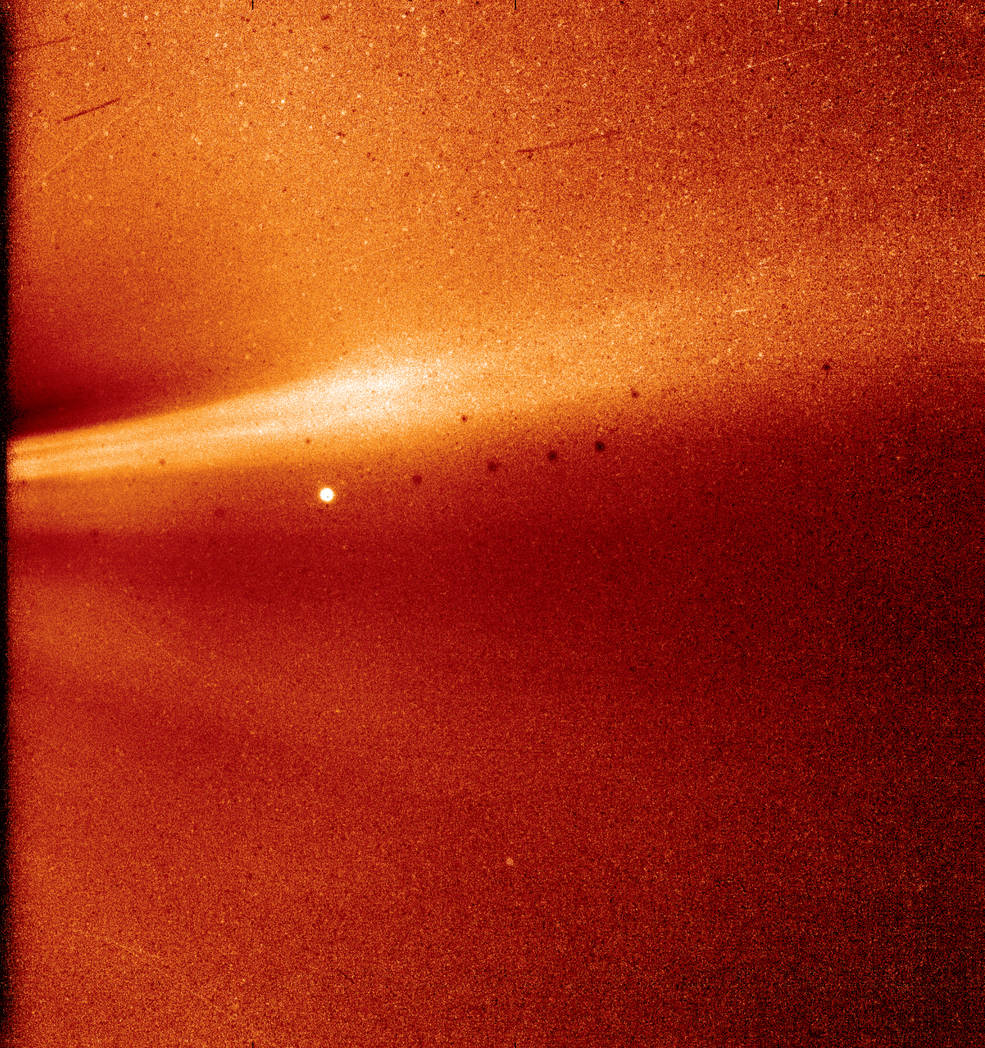
Solar Orbiter will take seven years to reach a viewpoint 24 degrees above the Sun’s equator, increasing to 33 degrees if the mission is extended an additional three years. That will provide the best views ever of the poles.
Additionally, the poles may be able to shed some light on the driving force behind sun spots — dark spots on the sun’s surface that mark strong magnetic fields. In 1843, German astronomer, Samuel Heinrich Schwabe, discovered that the spots increase and decrease during the solar cycle in a repeating pattern.
There are an abundance of sunspots during solar maximum (when the sun is active and turbulent) and fewer during solar minimum (when the sun is calmer). But scientists don’t understand why the cycle lasts 11 years, or why some solar maximums are stronger than others.
They hope to find the answer by observing the changing magnetic fields at the poles.
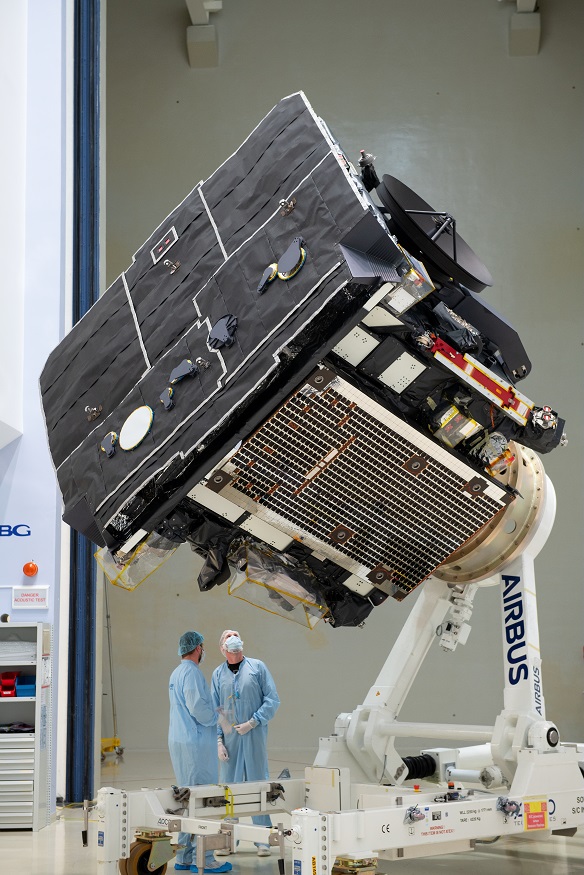
There’s only been one other spacecraft to fly over the sun’s polar regions: another joint ESA/NASA venture called Ulysses. It made three passes around the sun before being decommissioned in 2009. However, unlike Solar Orbiter, Ulysses did not have an imager on board to take pictures of the poles.
That spacecraft also did not get nearly as close as Solar Orbiter will. That’s because it lacked the technology required to keep it cool. Scientists have been waiting more than 60 years for missions like Parker Solar Probe and Solar Orbiter to come online.

It’s takes a lot of technology development to be able to design and build a spacecraft that will survive a close encounter with the sun.
Solar Orbiter is outfitted with a custom-designed titanium heat shield, topped with a calcium phosphate coating that withstands temperatures over 900 degrees Fahrenheit (482 degrees Celsius). That’s thirteen times the amount of heat that spacecraft in Earth-orbit are subjected to.

Cybertruck
Tesla Cybertruck fleet takes over at SpaceX’s Starbase
Interestingly, the Cybertruck uses the same exterior, a stainless steel alloy, as SpaceX rockets. This synergy between the two companies and their very different products shows a very unified mentality between Musk companies.

Tesla Cybertrucks have taken over at SpaceX’s Starbase facility in Texas, as hundreds of the all-electric pickup trucks were spotted late last week rounding out a massive fleet of vehicles.
The Cybertruck fleet is geared toward replacing gas vehicles that are used at Starbase for everyday operations. The only surprise about this is that it was not done sooner:
Was just visiting. pic.twitter.com/5Q9wPPaeuH
— Derek Li (@derek1ee) October 31, 2025
Deliveries have been going on for a few weeks, as Cybertrucks have made their way across the state of Texas from Austin to Starbase so they could be included in SpaceX’s fleet of vehicles at the facility.
Interestingly, the Cybertruck uses the same exterior, a stainless steel alloy, as SpaceX rockets. This synergy between the two companies and their very different products shows a very unified mentality between Musk companies.
However, there are some other perspectives to consider as SpaceX is utilizing such a massive fleet of Cybertrucks. Some media outlets (unsurprisingly) are seeing this as a move of weakness by both Tesla and SpaceX, as the aerospace company is, in a sense, “bailing out” lagging sales for the all-electric pickup.
It’s no secret that Tesla has struggled with the Cybertruck this year, and deliveries have been underwhelming in the sense that the company was anticipating between 1 million and 2 million orders for the vehicle before it was widely produced.
A lot of things changed with the Cybertruck between its 2019 unveiling and 2023 initial deliveries, most notably, price.
The price of the Cybertruck swelled significantly and priced out many of those who had pre-ordered it. Some have weighed the option of whether this purchase was a way to get rid of sitting inventory.
However, it seems more logical to consider the fact that SpaceX was likely always going to transition to Teslas for its fleet, especially at Starship, at some point.
It doesn’t seem out of the question that one Musk company would utilize another Musk company’s products, especially considering the Cybertruck has been teased as the vehicle that would be present on Mars.
News
SpaceX opens up free Starlink service for those impacted by Hurricane Melissa

SpaceX is opening up its internet service, Starlink, to those impacted by Hurricane Melissa, as it made landfall in Jamaica and the Bahamas as a Category 5 storm.
Hurricane Melissa is expected to reach wind speeds of over 165 MPH over the next few days as it extends out into the Atlantic Ocean by Thursday and Friday.
Satellite imagery shows Hurricane #Melissa‘s growth from its formation on October 21 to a Category 5 hurricane through October 27, 2025. #HurricaneMelissa pic.twitter.com/goR3Hbgb9c
— The Weather Network (@weathernetwork) October 27, 2025
Citizens in Jamaica and the Bahamas have been preparing for the storm for the past week, getting necessary goods together and preparing for the massive storm to arrive. It finally did yesterday, and the first images and video of the storm are showing that it could destroy many parts of both countries.
Starlink is now being opened up for free until the end of November for those impacted by the storm in Jamaica and the Bahamas, SpaceX announced today:
For those impacted by Hurricane Melissa in Jamaica and the Bahamas, Starlink service is now free through the end of November to help with response and recovery efforts → https://t.co/fUko3xSviJ
— Starlink (@Starlink) October 28, 2025
It is a move similar to the one the company made last year as Hurricane Helene made its way through the United States, destroying homes and property across the East Coast. SpaceX offered free service for those impacted by the destruction caused by the storm.
The free Starlink service was available until the end of 2024.
Elon Musk’s companies have also made similar moves to help out those who are impacted by natural disasters. Tesla has offered Free Supercharging in the past, most notably during the California wildfires.
Tesla and SpaceX’s LA fire relief efforts: Cybertrucks, free Starlink and more
One major advantage of Starlink is that it is available for use in situations like this one, where power might be required to operate things like a modem and router.
Internet access is a crucial part of survival in these situations, especially as it can be the last leg some stand on to get in touch with emergency services or loved ones.
News
SpaceX reaches incredible Starlink milestone

SpaceX has reached an incredible milestone with its Starlink program, officially surpassing 10,000 satellites launched into low Earth orbit since starting the program back in 2019.
Last Sunday, October 19, SpaceX launched its 131st and 132nd Falcon 9 missions of 2025, one from Cape Canaveral, Florida, and the other from Vandenberg, California.
The 10,000th Starlink satellite was aboard the launch from California, which was Starlink 11-19, and held 28 v2 mini optimized satellites.
The achievement was marked by a satellite tracker developed by Jonathan McDowell.
🚨 With its Falcon 9 launch last Sunday, SpaceX officially has 10,000 Starlink satellites in orbit pic.twitter.com/xS5RVZ4ix0
— TESLARATI (@Teslarati) October 26, 2025
The first Starlink launch was all the way back on May 23, 2019, as SpaceX launched its first 60 satellites from Cape Canaveral using a Falcon 9 rocket.
Of the over 10,000 satellites in orbit, the tracker says 8,608 are operational, as some are intentionally de-orbited after becoming faulty and destroyed in the atmosphere.
SpaceX has truly done some really incredible things during its development of the Starlink program, including launch coverage in a global setting, bringing along millions of active subscribers that use the service for personal and business use, locking up commercial partnerships, and more.
Starlink currently operates in around 150 countries, territories, and markets and is available at least somewhere on all seven continents.
Additionally, Starlink has over 5 million subscribers worldwide, and 2.7 million have joined the program over the past year. It has revolutionized internet access on commercial aircraft as well, as several high-profile airlines like Qatar and United, among many others, have already installed Starlink on some of their planes to deliver more stable connectivity for passengers and crew.
SpaceX has the approval to launch 12,000 Starlink satellites from the FAA, but it plans to bring over 30,000 to its constellation, giving anyone the ability to have access to high-speed internet.








